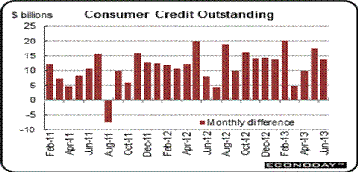The Mortgage Corner
We think not. Interest rates are rising, mainly due to some Fed Governors saying they may begin to end the QE3 purchase of securities later this year. But that is based on overly optimistic growth projections by mostly deficit hawks who don’t like the Fed to borrow so much money.
Therefore, we also want to know how this affects real estate sales, with rates already up 1 percent since Bernanke sounded off on the possibility of slowing down purchases this year. The effect will not be good, as RE sales are already slowing.
I believe initial ‘tapering’ of securities in QE3 might not even happen this year because of slowing economic growth, and less than full employment. Both are stuck at the low end of a recovery, with GDP growth less than 2 percent this year to date, and the unemployment rate still above 7 percent, when 5 percent is closer to full employment.
A key indicator of future sales is mortgage volume, and it has been slowing since the rate rise. Although the 4-week average of the Mortgage Bankers Association purchase index has generally been trending up over the last year, it has been down over the last couple of months. However, the 4-week average of the purchase index is still up about 7 percent from a year ago, as the graph shows.
But the refinance index is down some 59 percent, and refinance volumes tend to affect future sales. The last time the index declined this far was in late 2010 and early 2011 when mortgage rates increased sharply, with the Ten Year Treasury rising from 2.5 percent to 3.5 percent, says Calculated Risk. The Ten Year Treasury yield is up from 1.6 percent to over 2.7 percent today, but with such slow economic growth we don’t anticipate mortgage rates rising much further.
Santa Barbara and South Coast sales are slowing a bit from the spring, per Gary Woods’ monthly MLS report, but are still better than last year. Single Family and PUD sales are up 4 percent in a year, and the median price up 16 percent.
“There have been a significant number of new home listings coming on the market,” said Gary in his report, “and with the escrows declining slightly the overall inventory has started to climb. With sales starting to cool the median sales price should continue to rise because available properties in the overheated $600,000 to $900,000 have declined while homes on the market priced above $1 million have become more plentiful.”
Nationally, existing-home sales finally reached its more normal 5 million unit annual rate over the past 2 months, and new-home sales are some 500,000 annually, vs. 1.2 million at the height of the housing bubble, as we said last week. So RE sales and prices have room to grow if economic growth does pick up in the fall, as the more optimistic Fed Governors predict.
Graph: Econoday
However, the best place to look for interest rate trends is not Wall Street speculators betting on what Bernanke’s Fed will do. It is the actual demand for money, and that is still low for all but student and auto loans. Consumer credit reported by the Commerce Dept. has been strong for so-called installment loans, but not revolving credit card debt.
Consumer credit growth was held down in June to $13.8 billion versus May's revised $17.5 billion. Revolving credit, which had jumped a revised $6.4 billion in May, contracted $2.7 billion. Revolving credit has been up and down for the whole recovery, reflecting consumer caution and tight lending standards. So excluding autos, June was a weak month for retail sales as reflected in the revolving credit component of this report.
So who knows what the future will bring, with all the political uncertainty? That is probably what the Wall Street speculators are counting on—more uncertainty equals more volatility and so greater profits for the day traders.
Harlan Green © 2013
Follow Harlan Green on Twitter: www.twitter.com/HarlanGreen



No comments:
Post a Comment